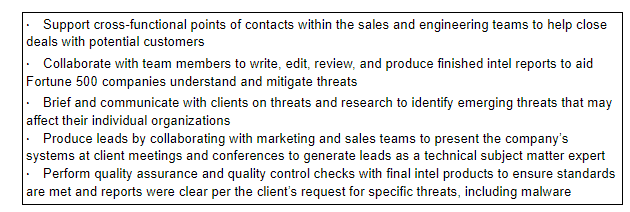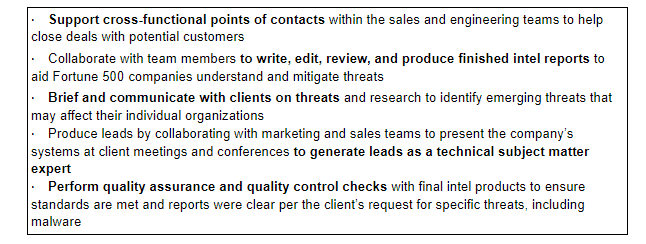Using Bold, Italics, and Underlining on Your Resume – the Right Way

Thinking about adding bold, italics, and underlining to your resume to jazz it up a little? Read this first so you do it right.
Editor’s note: This post was originally published in 2021; it has been updated for accuracy and comprehensiveness.
By: David Hartley | Contributor for Let’s Eat, Grandma
Bolding and underlining and italicizing, oh my!
You’ve done it. You’ve selected an appropriate format that looks clean and professional.
You’ve determined the best accomplishments, metrics and keywords that will optimize your resume to the fullest.
All that is left to do is add some style with underlining, bolding, and italicizing…
But wait … where do you begin?
Tired of not landing interviews?
Get our free 3-step guide to writing better resume bullet points, featuring 70 ideas for metrics you can use!

Photo by Thought Catalog on Unsplash
Enhancing your resume with bold and italics
“Does it look too busy? Am I emphasizing the right things? Are these styles ATS-friendly?”
I speak to resume writing clients every day that struggle with these same questions.
They understand what keywords are and how they should be incorporated into the document, and they have come prepared with valuable metrics to bolster their fantastic work experience. But now they want to add a little visual emphasis to the document, and they ask me: “How much should be added? What is too much?”
Bolding and italicizing words on your resume could be a very bold (pun very much intended) choice that can highlight key areas of your resume. But there are a few things to consider when deciding how to use these tools of emphasis.
(And *spoiler alert* we don’t recommend underlining – you’ll see why later.)
To bold or not to bold
When considering applying different styles on your resume text, you have to use a certain level of restraint.
Too many bolded or italicized words will have the opposite effect of what you are trying to accomplish. Too much emphasis all over your resume is like none at all!
However, there are a few key areas where bold works well.
Headers and non-bulleted details
When I work with my clients, I often analyze what they bolded on previous resumes. This immediately gives me an idea of what’s important to them.
Take note of the crucial lesson I just proved: Bold words tell the reader what is important.
Let’s look at a typical job heading on a resume from a client of mine:
There are four pieces of crucial information here: Job title, company name, dates worked, and location. As a resume writer, I understand that job titles are often the most searched keywords in ATS, so I took the opportunity to bold the job title for the reader.
It’s a crucial piece of information that you want the recruiter to notice while they’re scanning as well. They are quickly looking for relevant information that will help them make a decision. So while location, dates worked, and company name are occasionally important to the recruiter or hiring manager, job titles are always important.
Let’s look at another example:
Once again, we have four pieces of information, but I have chosen to bold the most relevant information to my client’s job search. The bolded degree name is what we want our reader to read first. For example, let’s move the bolding to a different piece of information:
Naturally our eyes read the bolded material first and the other information next. Sure, the name of your university is important. But it isn’t as relevant as the degree you earned, especially if your degree aligns with the position you are applying for.
Keywords in bullets
There is one other strategy you can use for bolding your resume. Occasionally, my clients worry that their experience section appears to be one large block of text. Bolding keywords and phrases within the bullet can help lift certain text off the page.
Let’s look at an example from a past client of mine:
My client was worried that her experience looked like a wall of text. I agreed with her and understood we needed to highlight the most important areas. After working together, we came up with this:
This new version created breathing room in the document by positioning certain words and phrases to catch the attention of the reader.
You can also do this in the Summary of Qualifications as well to emphasize key qualities that you want to make sure a hiring manager doesn’t skip over.
However, I don’t recommend this method for everyone. Once you start bolding things, it can get easy to get carried away, and it can quickly become too much. When too many things are bold, the bold stops being effective.
But with restraint, bolded keywords and phrases within your bullet points can make your resume stand out. Not sure if you’ve applied bold correctly in your resume? Send it in for a free critique by one of our senior writers.
What about italics?
Italicized words on a document can be used effectively as attention-grabbers on the document as well. However, the same rules apply as with bolding: don’t use too much, or your emphasis gets lost within the document.
With my clients, I often use italics for longer pieces of information, such as a job description. Here is an example:
In this resume, I utilized italics to emphasize the general overview of the position since it would be too distracting to bold that entire phrase.
You’ll also need to be mindful about what you italicize in conjunction with your bolding.
A Warning!
Using both italics and bold in conjunction can be effective on your resume, but be wary. Switching back and forth between bold and italics too often in the same section can cause a seasick effect with the reader that makes them lose focus.
What about underlining?
While underlining seems like another good way to emphasize keywords and phrases on your resume, there is one issue: Underlining isn’t aways ATS-friendly. It can also be confusing to read.
Depending on the font you’re using, underlining can cause ATS to incorrectly read certain parts of words (think about how the line cuts through q’s and p’s), which can result in keywords not being parsed correctly.
This makes your resume less likely to come up in search results!
Plus, resumes are usually read on screens nowadays, and we’re used to underlined text indicating a link on a screen. Seeing underlined text that’s not a link can be a little confusing.
However, there is an exception. Hyperlinks are indeed ATS-compliant, so fear not when linking your email address or LinkedIn Profile page. (If you see something saying that ATS doesn’t like links, that’s one of many myths and misunderstandings.)
You can also feel free to use lines to break up the page between the sections: Those won’t cause any problems with ATS.
In summation
We encourage you to bold and italicize certain words and phrases on your resume to make them stand out. Don’t be intimidated by these tools!
Just remember to ask yourself what you want your reader to know and what is most relevant to the job search.
If you keep that in mind, your resume will be application ready!
Ready for more job search help?
Sign up for a free Senior Writer Resume Critique to see what's holding you back from landing interviews. One of our top professional resume writers will give you personalized feedback on the top 3 items you can improve based on our expert practices!






